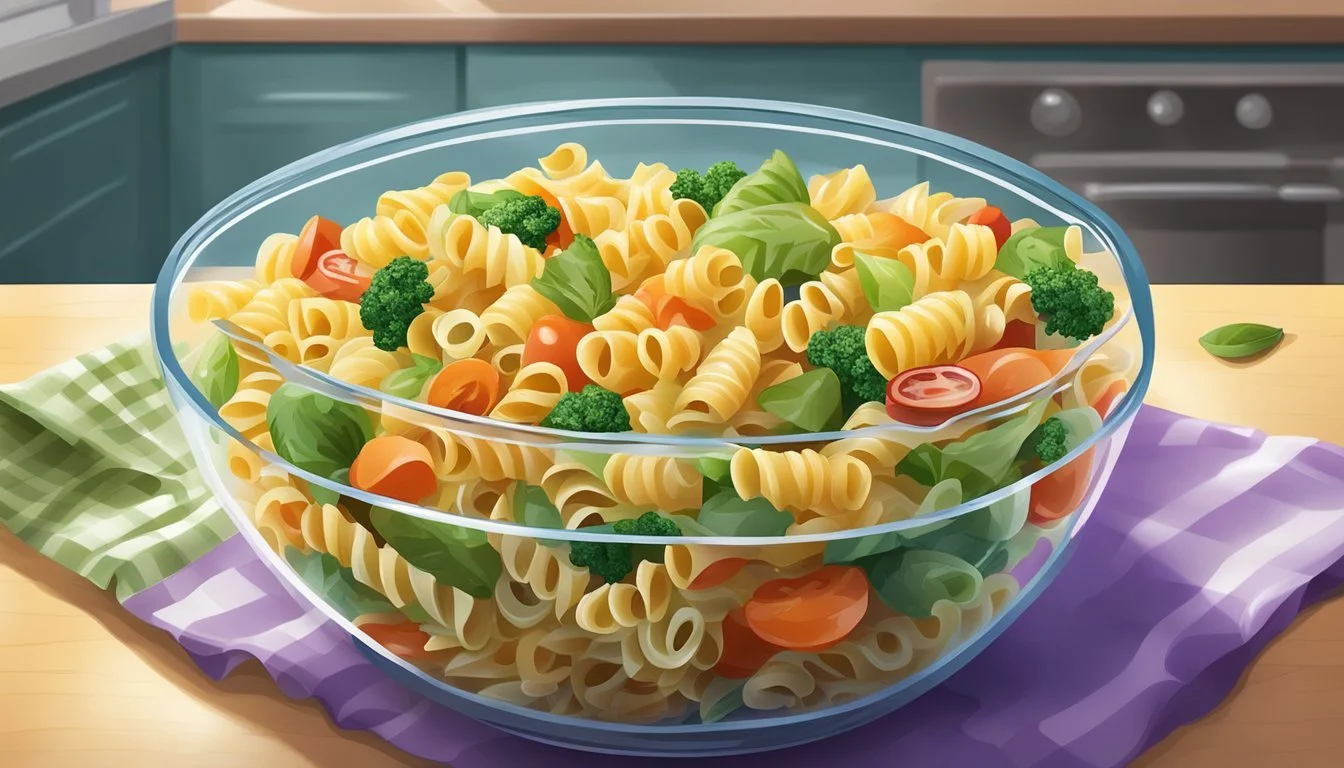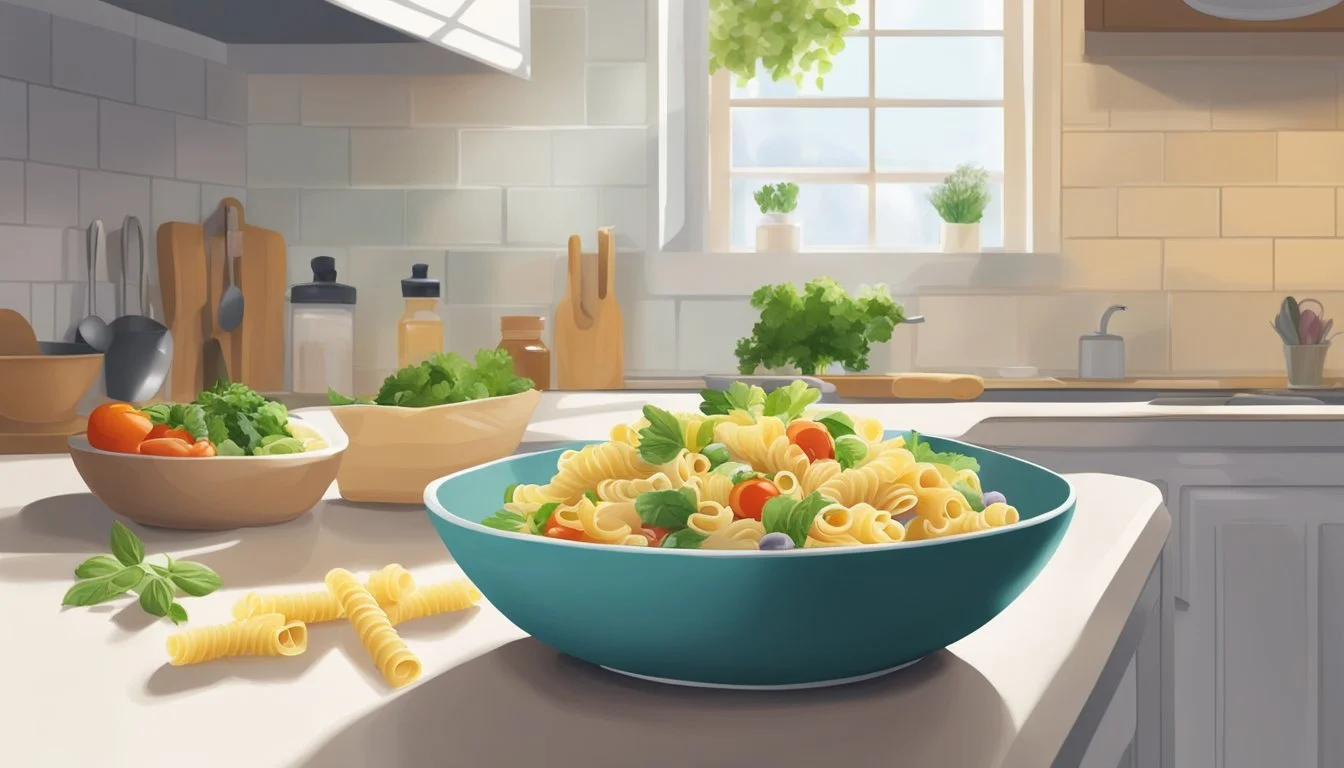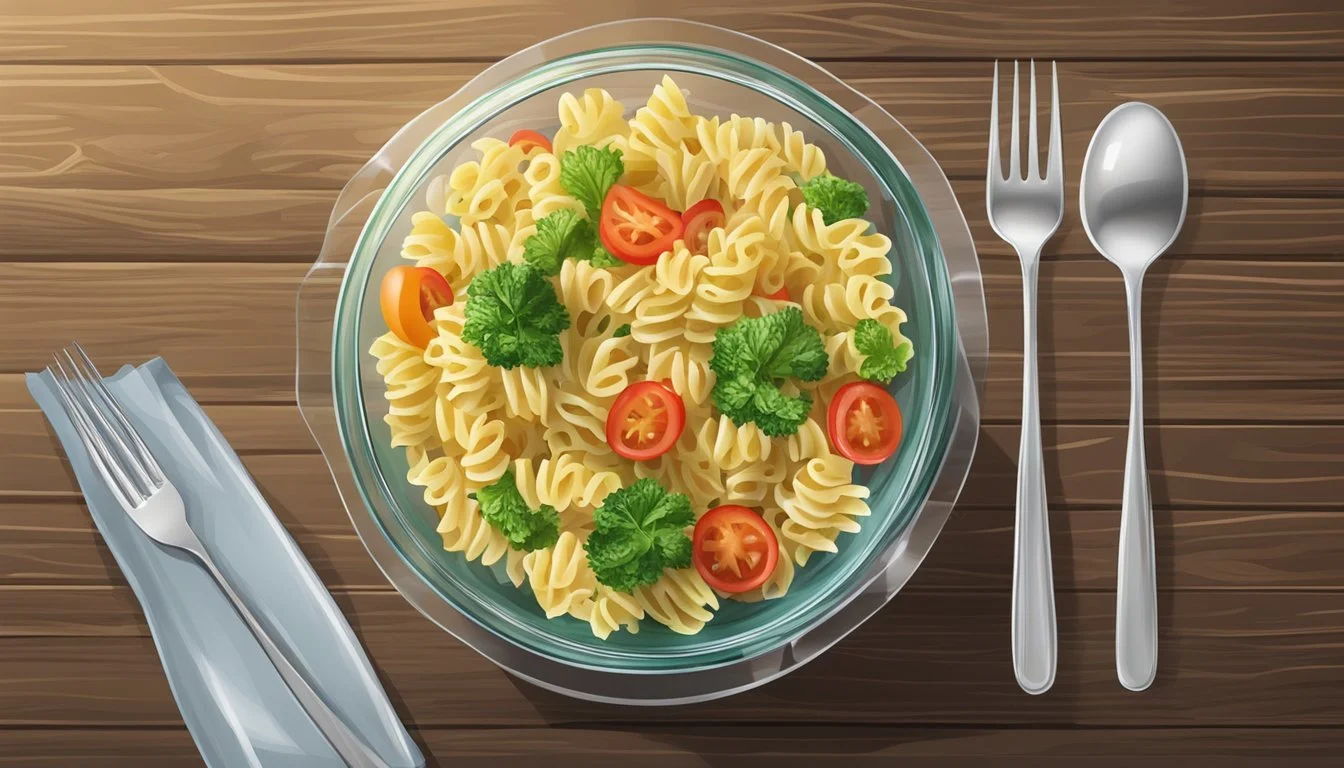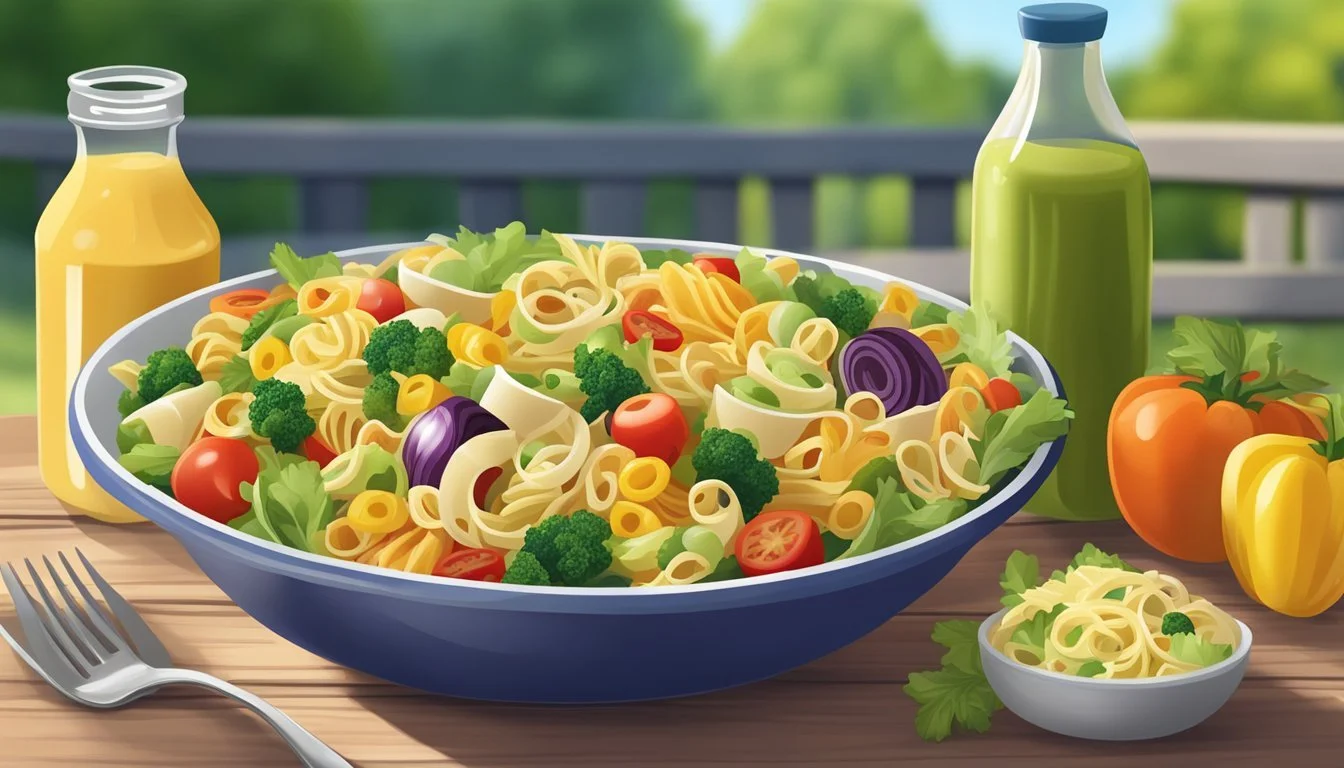How Long Does Freshly Prepared Pasta Salad Last?
Shelf Life and Storage Tips
Freshly prepared pasta (What wine goes well with pasta?) salad is a versatile and popular dish that often graces picnic tables and meal-prep menus. Its shelf life is a key consideration for both safety and taste. Generally, pasta salad retains its freshness when stored in the refrigerator at or below 40 degrees Fahrenheit. The specific ingredients in the salad play a crucial role in determining how long it lasts. The presence of dairy products, mayonnaise, meat, poultry, or seafood typically reduces the storage time due to their perishable nature.
For pasta salads (What wine goes well with salads?) containing these more perishable ingredients, it is advisable to consume them within three days. This time frame helps ensure both safety and quality. On the other hand, pasta salads dressed with oil-based vinaigrettes and without high-risk ingredients can last slightly longer, up to five days. Regardless of the type, it is important to store pasta salad in airtight containers to maximize freshness and minimize the risk of contamination.
Labeling the container with the preparation date can aid in tracking its storage duration. It is also essential to maintain good hygiene practices during preparation and to refrigerate the pasta salad promptly after serving to preserve its shelf life. Consuming pasta salad at peak freshness not only offers the best flavor but also reduces the potential for foodborne illness.
Determining Freshness and Spoilage
Knowing when a pasta salad has passed its peak freshness is critical to ensure both quality and safety. This section outlines the various indicators of spoilage, the impact of different ingredients on the longevity of the salad, the role of bacteria in food spoilage, and how to use our senses to assess if the salad is still suitable to eat.
Identifying Signs of Spoilage
The most obvious indicators of spoilage in pasta salad include mold growth, an unusual color, or a slimy texture. These signs suggest that the salad is no longer safe for consumption. The presence of mold, in particular, is a clear signal that the pasta salad has been compromised and should be discarded immediately.
Effects of Ingredients on Shelf Life
Ingredients in a pasta salad can significantly affect its shelf life. For example, pasta salads containing dairy, meat, poultry, or seafood should be consumed within 3 days, because these ingredients are more perishable. In contrast, salads without these ingredients may last up to 5 days. A simple list to determine shelf life based on ingredient type includes:
Dairy, meat, poultry, seafood: up to 3 days
Vegetables, oil-based dressings: up to 5 days
Understanding Bacteria's Role
Bacteria are a key factor in food spoilage. They thrive at temperatures between 40°F (5°C) and 140°F (60°C), multiplying rapidly. Pasta salad that has been left out unrefrigerated for more than 2 hours should be discarded to prevent the risk of food-borne illness, especially if the ambient temperature exceeds 90°F (32°C).
Sensory Evaluation: Taste, Smell, and Texture
One's senses are reliable tools for evaluating the freshness of pasta salad. An off smell or sour smell, a decline in flavor, or a change in taste suggest the onset of spoilage. If the texture of the pasta has become slimy or if there is any doubt regarding quality based on sensory evaluation, it is safer to err on the side of caution and discard the salad.
Storing Pasta Salad
Proper storage of pasta salad is crucial to maintain its freshness and safety. The shelf life can vary based on ingredients and storage methods.
Best Practices for Refrigeration
Refrigerating pasta salad promptly after preparation or serving is essential. One should ideally store pasta salad in the refrigerator within two hours of making it to prevent bacterial growth. For salads containing dairy, meat, poultry, or seafood, they recommend consumption within 3 days to ensure safety and freshness.
Airtight Containers and Shelf Life
Storing pasta salad in an airtight container is key for preserving its quality and extending its shelf life. This minimizes exposure to air and moisture, which can lead to spoilage. Pasta salads without meat or dairy have a longer shelf life, typically up to 5 days.
Ideal Temperature for Storage
The refrigerator should be set at a temperature of 40°F (4°C) or below. Maintaining a consistent, cold environment is vital for slowing down the deterioration process of the salad's ingredients and dressings.
Handling Leftovers
When dealing with leftovers, it's important to use clean utensils to avoid cross-contamination. Divide large amounts into smaller portions to ensure the salad cools evenly and quickly. Leftovers should be consumed as soon as possible to enjoy their best quality, generally within the specified shelf life for the type of pasta salad.
Ingredient-Specific Considerations
The longevity of pasta salad can be influenced by its ingredients. Specific components such as dairy or dressing significantly affect shelf life, whereas the presence of meats, vegetables, and herbs can also alter the period for which the salad remains fresh.
Impact of Dairy in Pasta Salad
Ingredients: cheese, mayonnaise, dairy
In pasta salad, dairy products such as cheese or mayonnaise can reduce the shelf life. These items are prone to spoilage and typically mandate that the salad be consumed within 2 to 3 days when stored at or below 40°F.
Role of Dressings on Longevity
Ingredients: dressing, vinaigrette, olive oil, vinegar
Dressings can dictate a salad's freshness. A vinaigrette based on olive oil and vinegar can keep pasta salads fresh for up to 5 days. Creamy dressings, containing dairy or mayonnaise, often require consumption within 3 days to maintain safety and quality.
Vegetables, Meats, and Add-ins
Ingredients: vegetables, meat, olives, tomatoes, roasted vegetables, (What wine goes well with roasted vegetables?) protein
Fresh and roasted vegetables, like tomatoes or olives, retain their quality in pasta salad for 3 to 5 days. Proteins such as meat, when added, should prompt usage within 3 days due to a higher risk of spoilage and potential food-borne illness.
Herbs and Flavor Enhancers
Ingredients: herbs, flavors, fresh herbs (how long do fresh herbs last?)
Herbs and natural flavor enhancers bring vibrancy but can wilt or lose potency over time. Fresh herbs should be consumed while vibrant, typically within the pasta salad's overall safe window of 3 to 5 days, depending on other ingredients.
Safety and Health Considerations
When it comes to pasta salad's safety and health considerations, consumers must be mindful of the potential for food poisoning due to contamination and the salad's inherent nutritional value. Ensuring appropriate storage and recognizing the ingredients' effect on longevity are crucial for maintaining health and safety.
Food Poisoning and Contaminants
Proper refrigeration is paramount for pasta salad to mitigate the risk of food-borne illnesses. The presence of perishable ingredients such as mayonnaise, dairy products, poultry, or seafood intensifies the potential for harmful bacteria growth. One must ensure that:
The salad is stored at a temperature of 40°F (4°C) or below, as recommended by food safety guidelines.
Pasta salad with risk factors (e.g., dairy, meat) is consumed within 3 days.
Vegetarian pasta salads without perishable ingredients can typically last up to 5 days.
Cross-contamination with raw products should be avoided, and the salad should always be kept in an airtight container.
Nutritional Value and Wellbeing
The nutritional benefits of pasta salad vary with its ingredients. A pasta salad made with whole grains, fresh vegetables, and a light dressing can provide essential nutrients and be part of a healthy diet. However, pasta salads can become less nutritious if they are laden with heavy dressings or high-fat additives. To maximize health benefits:
Opt for whole-grain pasta and include a variety of vegetables.
Use dressings that are lower in calories and fat content, like vinaigrettes, in moderation.
Limit the addition of cheeses and processed meats to keep the salad more nutritious.
Monitoring the balance of ingredients in pasta salad can support wellbeing by providing a nutritious meal without an excess of calories or fat.
Extending Pasta Salad's Life
Proper preservation methods can significantly extend the shelf life of pasta salad by mitigating spoilage factors. Optimizing freezing and the use of preservatives are two key strategies.
Freezing and Thawing Methods
Freezing Pasta Salad: Though freezing is not commonly recommended for pasta salads—especially those with mayonnaise or dairy-based dressings due to separation and textural changes—it can be done effectively for short periods. To freeze pasta salad, one should:
Use oil or vinegar-based dressings, as they freeze better than dairy-based dressings.
Ensure the salad is stored in an airtight container to minimize the introduction of moisture and prevent freezer burn.
Label the container with the freezing date for reference.
Thawing Pasta Salad: When ready to consume, one should thaw the pasta salad in the refrigerator to ensure a slow and safe transition to an ideal temperature for consumption. Rapid thawing at room temperature can result in bacterial growth.
Use of Preservatives
To naturally extend the shelf life of pasta salad, the selection of ingredients plays a critical role. Preservatives can include:
Natural Acids: Using dressings with high vinegar content, which acts as a natural preservative.
Salt and Sugar: These ingredients can act as natural preservatives, warding off spoilage when used in moderation within recipes.
By carefully selecting dressings and ingredients with natural preserving qualities, one can safely maintain the freshness and extend the life of pasta salads.
Special Situations
In scenarios where pasta salad is served at social gatherings or transported for outdoor meals, food safety and freshness can be impacted. It's important to manage both time and temperature to ensure that the pasta salad remains safe to consume and enjoyable to eat.
Pasta Salad for Events and Gatherings
When serving pasta salad at events such as potlucks, parties, or as a side dish at gatherings, it should never sit out for more than two hours at room temperature. This is especially critical if the recipe includes dairy products, mayonnaise, or meat, as these ingredients are prone to bacterial growth. If the gathering occurs in a place where the ambient temperature exceeds 90°F (32°C), this time reduces to just one hour. For safety, serving pasta salad on ice or in a chilled container can help maintain the appropriate temperature.
Traveling and Picnics with Pasta Salad
Taking pasta salad on the go, for instance to a picnic, requires careful planning to maintain freshness. Utilize insulated containers with freezer packs to keep the salad cool during transit. When serving as either a main course or side dish, serve it directly from the cooler and return any leftovers immediately to minimize the time the pasta salad spends in the "danger zone" (40°F - 140°F or 4°C - 60°C), where bacteria can multiply rapidly. Moreover, label the container with the time it was prepared to keep track of how long it has been stored.
Frequently Asked Questions
The preservation of pasta salad depends on its ingredients and storage. Understanding how to maximize the shelf life while ensuring safety is crucial.
Can You Freeze Pasta Salad?
One can freeze pasta salad, but textural changes upon thawing may occur. Pasta salads without mayonnaise, dairy dressings, or fresh vegetables tend to freeze better. When frozen in airtight containers or freezer bags, they can last for 1-2 months. However, freezing is not recommended for optimal taste.
How to Detect Dairy-Based Dressing Spoilage?
Dairy-based dressings in pasta salad, such as those containing mayonnaise, sour cream, or milk, can spoil quickly. Indicators of spoilage include an unpleasant odor, a change in color, or any visible mold. It's imperative to consume these salads within 2-3 days when refrigerated to prevent food-borne illness.
Best Way to Store Pasta Salad for Optimal Taste?
To maintain the best taste, pasta salad should be stored in the refrigerator in airtight containers. This method protects the salad from absorbing other food odors and maintains freshness. Store-bought and homemade pasta salads, especially those with dairy-based dressings or pesto, should be consumed within 3-5 days of their preparation or by the expiration date on the packaging.
How Long Can Pasta Salad Stay Unrefrigerated?
Pasta salad should not be left unrefrigerated for more than two hours, as bacteria grow rapidly at room temperature. In hot weather (above 90°F), that time reduces to one hour. After these periods, it's best to discard any leftovers to avoid the risk of food poisoning.








